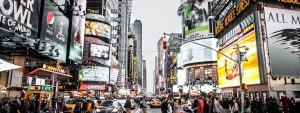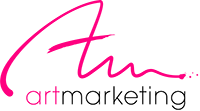By Jo Detavernier. Member of the First PR Alliance
Original article here
The coronavirus pandemic is not a time when brands should cut back on marketing. Actually, those that can afford to should make use of the opportunity to increase their share-of-voice and thus market share.
 A natural reaction might be to protect profitability as much as possibly by cutting into marketing spend or keeping the marketing spend equal but recalibrating it towards spending more on demand activation. Of course, the problem is that for some product categories there is not enough supply to cater to a growing demand or – a more common problem – demand has dropped because the buyers simply have no use for the product or can not buy it.
A natural reaction might be to protect profitability as much as possibly by cutting into marketing spend or keeping the marketing spend equal but recalibrating it towards spending more on demand activation. Of course, the problem is that for some product categories there is not enough supply to cater to a growing demand or – a more common problem – demand has dropped because the buyers simply have no use for the product or can not buy it.
If you have a buyer who has temporarily no use for your product, doubling down on demand activation is not a fruitful path. But does this mean that also should be cut back on brand communication? The answer from Les Binet and Peter Field on that question is a resounding no.
Binet and Field are famous for the data crunching they did on IPA entries over the years. A classic publication The Long and The Short of It appeared in 2013. Binet and Field looked at the data of 50 case studies covering the 2008-9 recession period. Some brands had cut their Share of Voice while others had raised theirs. Binet and Field had figured out that SOV is strongly correlated to market share. Making it so, makes cutting back on marketing spend in a recession a risky strategy.
What could be expected actually materialized. The brands that took advantage of lower SOV costs (once brands start cutting budgets, keeping up comes with less efforts), achieved impressive business gains. The companies that invested the most and acquired the highest Excess Share of Voice (ESOV) – meaning that they punch about their weight, having a share of voice that goes beyond the share of market – saw 5 times as many very large business effects (among them are profit, pricing and penetration) and 4.5 times the annual market share growth. Put in negative terms, data from Kantor shows that 60 percent of brands that ‘go dark’ during a recession decline on at least one key brand metric.
Binet and Field recommend that in normal times the ratio brand and activation spend be 60:40 whereby in 2018 companies reshuffled some budget to edge more towards a 50:50 spread, a decision that Binet and Field consider sensible. Of course, the financial crisis was a very different crisis than the current corona pandemic crisis where a lot of buyers will simply not have use for certain products and services (there is no use selling video surveillance solutions to mall operators when in the foreseeable future malls will not reopen). For many industries (including the surveillance industry one to stick with my example) it will make sense to double down on brand communication, not demand activation.
Continuing brand communication will indeed keep brand salience at a high enough level so that when the crisis is a thing of past and pent up demand is released, the brand makes a chance of being in the consideration set. [to be complete: the initial findings from the book applied to B2C campaigns – however, subsequent research showed that the same laws are also applicable in a B2B context]
What should this brand communication now look like? Global Web Index asked more than 12,000 internet users from different countries what they expect brands to undertake during the coronavirus outbreak. Only 37 percent thought that brands should carry on advertising as normal. 83 percent want flexible payment terms, 81 percent would want free services, 79 percent expect them to close non-essential stores to help prevent the spread and 67 percent would want them to suspend their normal factory production to help produce essential supplies.
Looking back at the campaigns that were most successful in 2008, Binet sees mostly emotional feelgood campaigns that are rooted in the reality of what the brands did for customers. Together with topical opportunities to build goodwill through acts of humanity and generosity, as hinted by what consumers expect from brands above, and a thought leadership track through which commentary can delivered to how the market will look like after the crisis is over, we know have three different tracks on which a mix of owned, earned and paid media can be employed to continue to hold the SOV and even – if resources allow for it (and giving the reduced cost of SOV that actually means it can be done without increasing the budget) – expand it, turning a crisis into an opportunity for growth.
